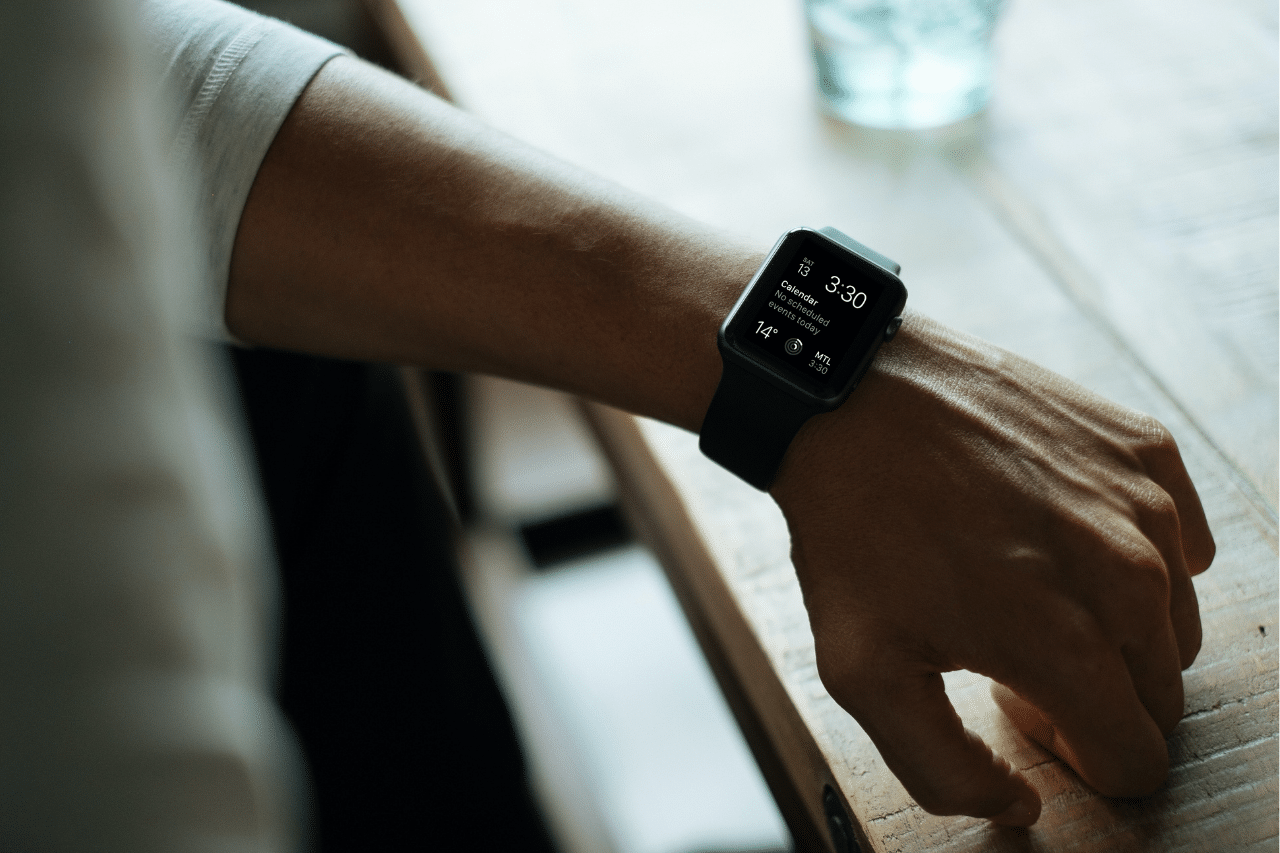
How Do Wearables in Healthcare Shape the Empowerment of Patients and Providers?
November 1, 2021
Wearable technology is changing the way people monitor and manage their health. Devices like smartwatches, medical bracelets, and downloadable medical apps are now used for a myriad of reasons – from clinical trials to managing a patients’ chronic condition.
Wearables connect patients with healthcare providers
Wearable devices have become ubiquitous, and appear to be revolutionary in the administration of healthcare. These wearables include small, sleek wristbands (such as Apple Watch and FitBit) to accelerometers, gyroscopes and wearable cameras. They expand the potential of data collection and can record much more than just heart rate and blood pressure data.
These devices share data with healthcare providers, such as doctors and care nurses, allowing them to increase their efficiency, improve quality of care and improve patient outcomes. When wearable technology is integrated with a patient’s life as well as with their medical history and family health records, the data collected greatly helps in getting an accurate diagnosis. This further assists in writing a prescription that’s tailored to an individual’s condition.
What are some wearable devices in healthcare?
The future of wearables shows no sign of slowing down as the demand for patients to monitor their own health is increasing. Current examples of wearables in healthcare include:
- Wearable fitness trackers – such as wristbands equipped with sensors to track patients’ vitals.
- Smart Health Watches – that allow users to perform tasks they would normally do on their phones – such as making calls and sending messages, while offering some health-tracking benefits.
- Wearable ECG Monitors – can track pace, distance, elevation as well as walking, running, biking etc. They measure an electrocardiogram and send readings to the patients’ doctor.
- Wearable Blood Pressure Monitor – may look like a typical watch, but can measure blood pressure and track daily activity.
- Biosensors – are self-adhesive patches that allow patients to move around, while collecting data on their movement – such as temperature, heart rate and respiratory rate.
Benefits of wearable devices in healthcare
- Health Monitoring – From your heart rate to sleep patterns, wearables come in handy to keep your health in check and to monitor health-related goals. Individuals use them to keep track of their general wellness, to follow a diet, as well as to remember to take medication on time.
- Helps Manage Chronic illnesses – Being technologically advanced and relatively affordable, wearables have been extremely handy to monitor conditions like Asthma, Diabetes, Multiple Sclerosis and Hemophilia. They empower patients to monitor and subsequently take control of their healthcare, minimizing the need for daily or weekly checkups.
- Boosts Mental Health and Physical Fitness – By making patients feel more aware of themselves and their daily activities, they provide a sense of achievement and instant feedback. Data from wearable devices can be used to create graphs so that one can see progress towards one’s goals.
- Future Applications – Today, wearables are used for patient monitoring and disease management, however their potential as a low cost means to improve the quality of patient care is immense. They can be integrated with electronic medical records (EMRs) to provide personalized preventable strategies and can provide information to the healthcare provider to spot warning signs before a serious event unfolds. They can help researchers learn about how various factors affect people’s lives and can therefore identify which patients are at-risk for developing certain chronic conditions.
Mobile healthcare is growing in popularity
In terms of mobile healthcare, patients download health apps on their mobile phones and use the various features of the app to keep track of health attributes. The Acuma Health app can be easily downloaded by patients to track their steps, sleep, log bleeds, record areas in their body where they are experiencing pain, etc. For patients with Epilepsy or a seizure disorder, the Inspyre by SmartMonitor can be downloaded on an Apple Watch or a Samsung watch to detect abnormal shaking movements and instantly alert the user’s contacts while also recording the data from the event for later review. By utilizing patient-fed information on apps, healthcare providers have a surveillance system with which they can stay up to date with patients on a real-time basis, allowing them to prevent, manage and treat diseases with ease.
The pandemic also accelerated the adoption of ‘remote care’ and, along with telehealth and digital check-ups, healthcare wearables have been helping healthcare providers monitor and manage patient progress (including physical, physiological, and biochemical parameters) from a distance.
What’s at stake when implementing wearables?
Healthcare organizations can effectively implement wearables, but the first step involves communicating with patients and staff to stress on the shared objective of using them so as to avoid the many pitfalls of remote patient monitoring.
Before beginning to use healthcare devices, organizations need to assess potential risks – including authorization issues – and factor in effective defenses such as multi-factor authentication. Providers must also prepare to identify and remediate threats, as healthcare data can be prone to theft and breaches. Additionally, it is important to meet patient expectations around wearables and privacy, and incident recovery must be transparent with measures to reduce ongoing risk.
What does the future hold?
With wearable healthcare technology surging, it encourages insurers, health providers and companies to take advantage of the benefits that these monitoring devices offer. Insurers can control the rising cost per patient by using wearables to increase the customer’s life value. The incentive for consumers is a reduction in hospital readmissions due to poorly managed personal health, and companies are seeing benefits in offering wearable health technology to employees by way of a healthier corporate culture and less turnover – 18%, as compared to 29%, according to Business Insider Intelligence.
To know more about how AI driven healthcare data management impacts the future of healthcare, head over to our blog. You can also follow us on Linkedin and Twitter for updates.